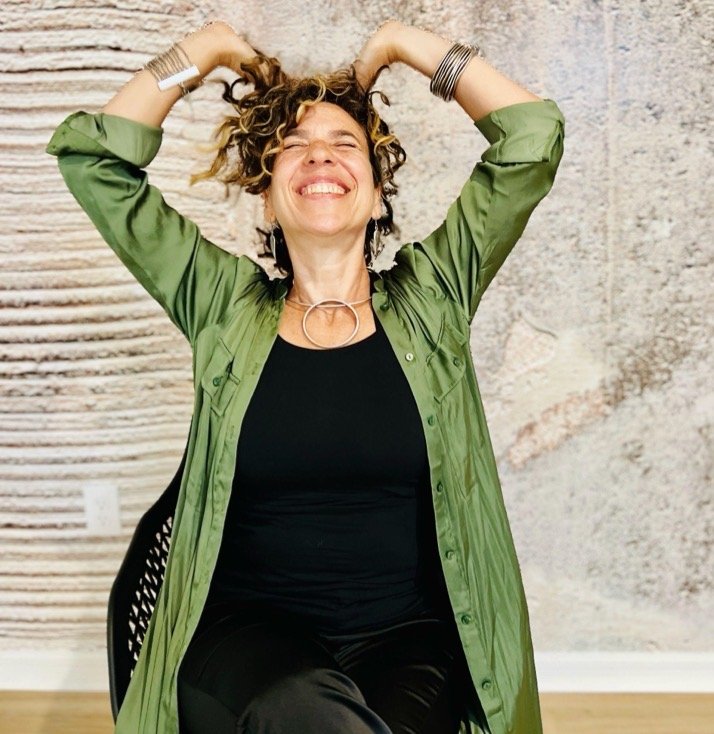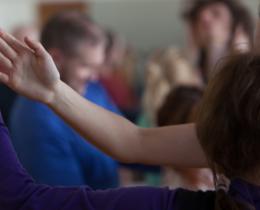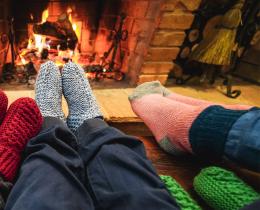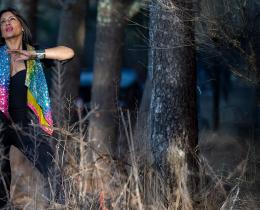We know resilience is the ability to keep going in hard times. Let's take the definition and break it down a bit. In the dictionary, resilience is "the capacity to withstand or to recover quickly from difficulties; toughness." When I read this, I realized that if we perceive resilience as toughness alone, it's a lot harder to keep our hearts and minds open. Being tough is important in some cases, but in general, toughening forces us to close off, harden our hearts, and fall into the trap of self-protection and a defended heart.
Luckily, there's more. There's a second part to the definition: "the ability of a substance or object to spring back into shape; elasticity." That's the part about resiliency that I connect with most. I want to be elastic, not tough. During difficult times, losses, tragedies, we may have to stretch our capacity, and at times we may feel totally "bent out of shape" or "stretched too thin." Resilience provides the capacity to feel, process, and come back to center, whenever we are ready.
So how do we build resilience, stay in the body, keep our hearts open, be compassionate, and have empathy? We add a practice of joy. Joy is an energy, a life-giving feeling. When we add joy, resilience begins to feel more like empowerment. Without joy, even our best attempts at resilience can feel like suffering.
Resilience - Joy = Suffering
Resilience + Joy = Empowerment
I built my own resilience by reclaiming my joy through radical self-acceptance. Unfortunately, I had to start working on it when I was very young. When I was little, I was often labeled as "too much," as in "She talks too much, she moves around too much, she's too smart, she's too disruptive, she's too enthusiastic."
But in second grade, being constantly told to calm down would make a person shut down, don't you think? I had just transferred into a new school, and I really loved my teacher. I came in so enthusiastically; I was super pumped to make new friends and fit in. Even though I was fidgety and a little hyper, I was totally the "hand in the air" participatory student. And I talked a lot on the side. It's possible I was a little disruptive.

One day, my teacher asked in class, "Is that the jabberwocky?" She looked around the room and everyone slowly turned toward me. I was like, Am I the jabberwocky? I didn't get the reference (turns out Jabberwocky is a nonsense poem written by Lewis Carroll). She would say things like, "Jabberwocky, if you don't be quiet, you're gonna have to sit next to JD," who was a boy in class who never spoke. So, I learned my lesson, and just shut down. I became shy. I had no more joy.
By third grade I was completely "well-behaved," raised my hand to speak, shut down all my enthusiasm, and was criticized because I became the "teacher's pet." By fourth grade, I became known as "the shy girl" because I never spoke up in class. I started to hate school. I never spoke in fifth grade—at all. I was teased and picked on in the playground.
By sixth grade there was a shift. I finally met "my people" who became my best friends. I got myself back, not fully, but a little bit. By high school I was still considered shy by people who didn't know me, but I found a sense of belonging in my friend group.
The Power of Dancing
The only place that I've ever been truly unselfconscious was dancing. Even in high school, I would go to the dances and the music would come on, and people would be saying, "Is that really Toni?" I didn't care about what I looked like, only what I felt like, and when I was dancing I felt my power, my resiliency. Over time I made my own community of weird, wild, powerful, deep people through dance. and little by little, I used embodiment to turn my self-consciousness into self-awareness.
I created the Funky quality as a way to bring up the emotions and positive feelings of joy into your body, so you can feel that sense of empowered resilience. I learned not to take myself so seriously, like a "proper adult," and give myself permission to be weird and wild. Moving in a funky way allows you to "find your groove" and "jam out." It's just a ton of fun! We can't help but enjoy it! It's the best way I know how to be comfortable in my own skin and feel confident, inspired, and safe.



